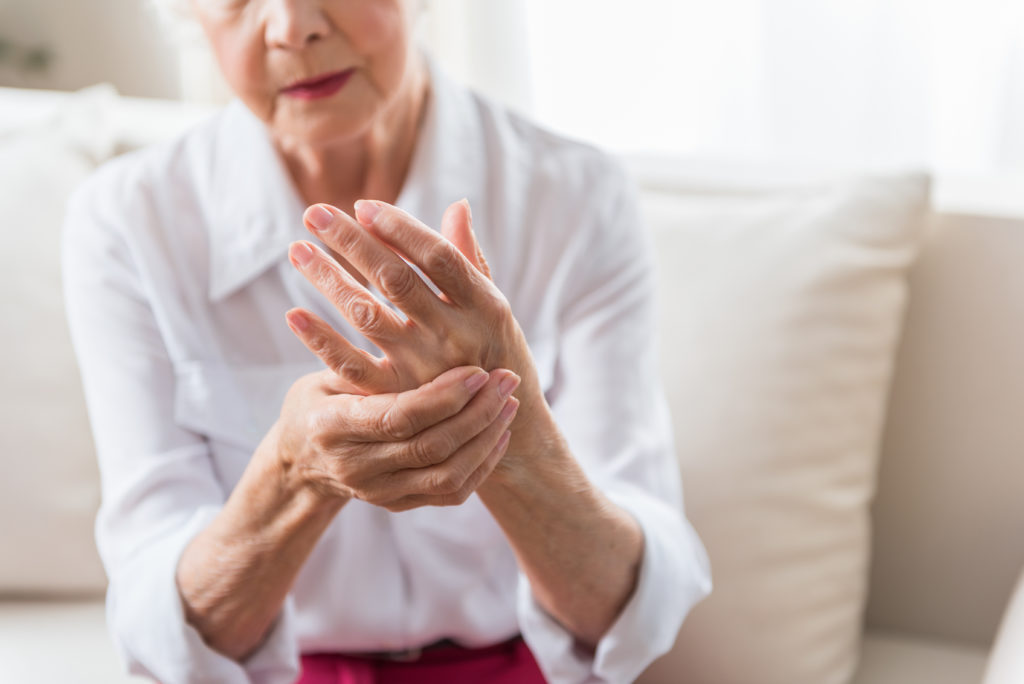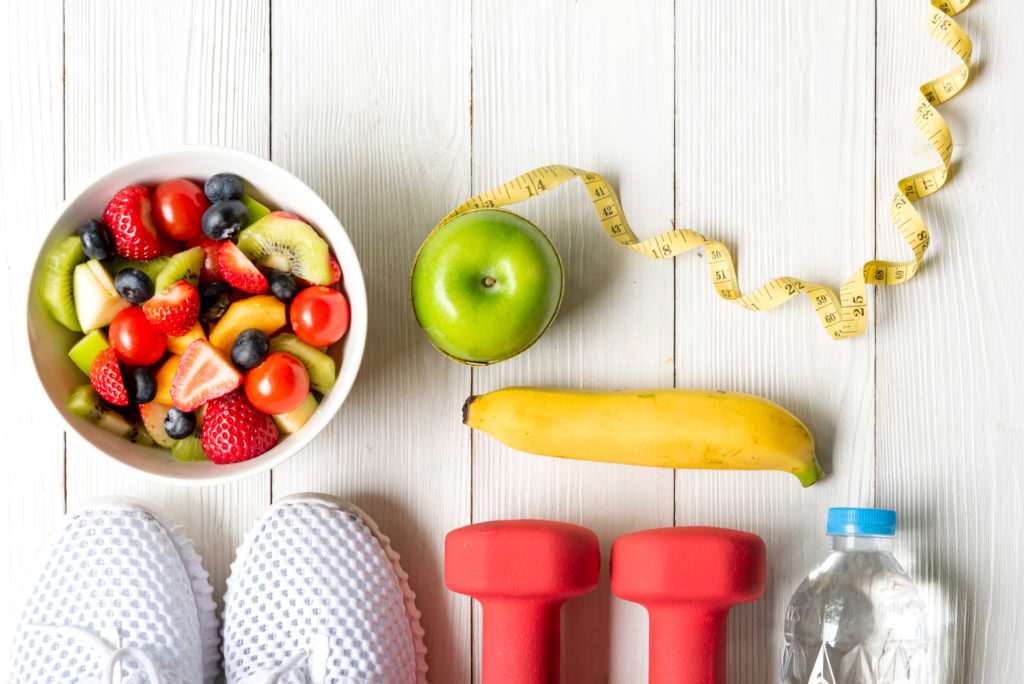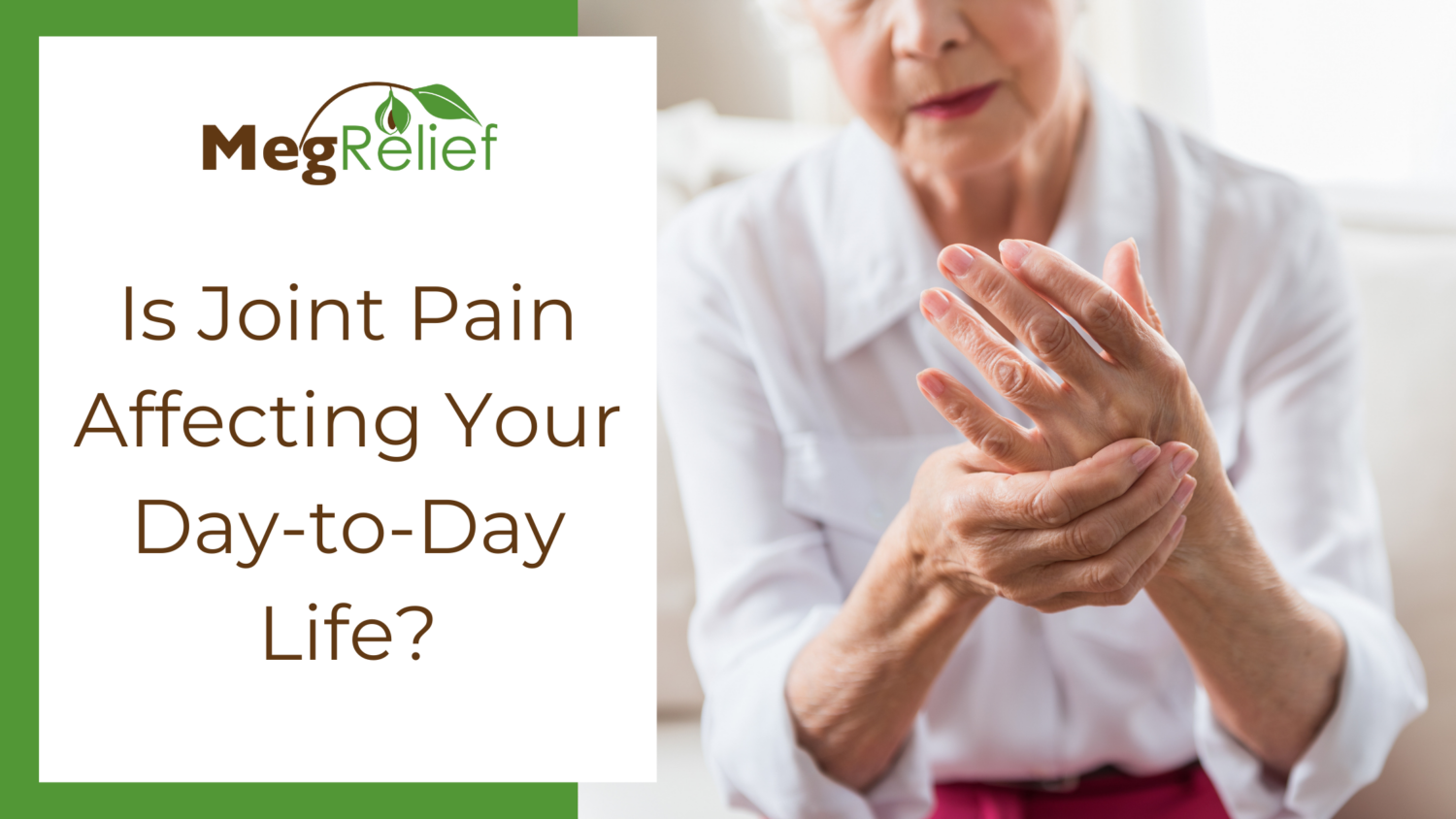Joints are the hinges of the body that allow our arms and legs to move and our head to turn; they are the connectors of the bones that form the human body.
For some of you, joint pain can be affecting your day-to-day life in small ways, but for others, it can be debilitating. It can last days, weeks, or even months. Some people have joint pain for years. Whether it is acute (short term) or chronic (long term), joint pain can affect the way you live your life.

Pain in your joints can affect any part of your body, from your ankles and feet to your shoulders and hands. As you age, having painful joints can become progressively more commonplace. This progression can make it difficult to walk, go up and down stairs, hold onto things, open jars and packages, or even tie your shoelaces.
Knee pain in particular is a common problem for people of age and for those who are overweight. That is why it is important to maintain a healthy weight throughout your lifetime in order to reduce stress on joints like the knees and hips.
Causes and symptoms of joint pain
There are a number of causes for joints being painful and stiff.
Causes range from simple sprains, strains, and other injuries to the more chronic causes such as rheumatoid arthritis, osteoarthritis, psoriatic arthritis, bursitis, and gout.
Each of these causes produce pain, but they also have symptoms that may or may not be shared. Some symptoms come on gradually while others happen suddenly and a simple strain or sprain will require a different remedy than will arthritis.
Symptoms
Symptoms of some of the above listed causes of joint pain include the following:
- Stiffness
- Pain
- Swollen joints
- Deformity of the joints
- Limited range of motion
- Redness and warmth in the joint area
- Fatigue
- Depression
- Muscle aches
- Poor appetite
- Skin irritation in those with psoriatic arthritis
How to determine which is affecting you
Make an appointment to see your doctor; he or she will examine the area that is bothering you in order to determine if it is a sprain, strain, or something more serious. They may order x-rays to help determine if you should see a specialist or not. For example, a rheumatologist helps determine the source of joint pain and the best remedy to use to reduce inflammation and pain.
Once the doctor has determined what is causing your joint pain, he or she will recommend a course of action. This could range from rest and NSAIDs to physical therapy and pain medicine. They may also recommend changes to your diet and exercise routine especially if you are carrying excess weight.
In some instances, dietary triggers can cause more pain than usual. To determine if you have a dietary issue, note what you eat and if the pain and stiffness become worse after eating certain foods. Once you determine the item or items that cause you more inflammation, you should try to avoid them as much as possible.
Joint pain remedies
There is no need to suffer from pain; there are many remedies available including prescription and over-the-counter medications to include anti-inflammatories and pain medicine, ointments, lotions, essential oils, heat and cold therapy. Many of the over-the-counter creams, lotions are designed to be massaged into the area that is affected. Cold reduces inflammation while heat aids circulation and relaxes tired, tight muscles.

Excess weight can affect the hips and spine so diet and exercise are important parts of treatment. Low-impact exercise combined with stretching can help with increasing range of motion. Walking is a good low-impact exercise which can help with weight loss. You may want to try exercising in a swimming pool to start out if your joints are extremely stiff and painful though. The water will offer less impact and less pain so that you can recover some range of motion. Once you have more range of motion and less pain, then you can try walking outside.
All-natural remedies
There are also certain spices and minerals that can help with joint pain-one of which is nutmeg.
Nutmeg essential oil can help reduce pain in the joints and muscles when massaged into the area. It also promotes circulation and decreases inflammation which will help increase range of motion and make it easier to walk and to move around in general.
Nutmeg can also do the following:
- Aid in digestion
- Reduce gas, bloating and diarrhea
- Kill microorganisms or stop their growth
Nutmeg can also help reduce anxiety. Put a bit in warm milk to help you relax and fall asleep. You can also try adding nutmeg to hot drinks like coffee, lattes, hot cocoa, and apple cider. If you decide to use nutmeg to add to food or drinks, you should speak to someone like an herbalist for guidance on how much to use as it can be toxic if you use too much.
Nutmeg contains potassium, calcium, iron, manganese, antioxidants, Vitamin C and some B vitamins. One other ingredient in nutmeg, which is a benefit, is myristicin. Myristicin is believed to invigorate the brain and may help with memory. Nutmeg is a powerhouse when it comes to nutrition.
Essential oils like Meg Relief are good options for relieving pain and stiffness due to joint inflammation. Nutmeg essential oil is recommended. An herbalist will be able to tell you exactly how much to use and how to apply it-doing this will ensure you use it safely.
By using Nutmeg essential oil, you may be able to reduce the number of prescription anti-inflammatories and pain medicines that you have to take. One other thing to remember is that using the nutmeg essential oil topically will not upset your stomach-some anti-inflammatories can.
Other essential oils can be used for weight loss. The weight loss combined with nutmeg essential oil can help with joint pain relief. Losing weight helps reduce the load on the joints and nutmeg essential oil helps quickly and naturally reduce pain and inflammation. When looking for joint pain relief without becoming dependent on drugs, essential oil is an alternative that is all natural and can be quite beneficial when it comes to relieving pain and stiffness. This will allow you to more effectively do the day-to-day things like getting out of bed, using the stairs, opening jars, and tying your shoes.






